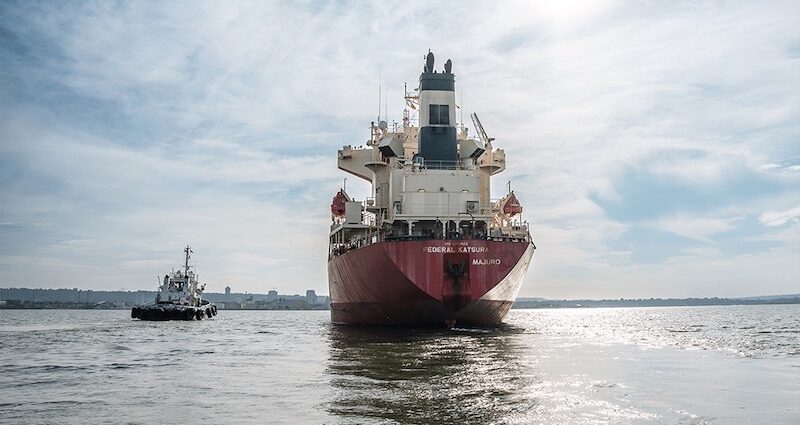In 2024, HOPA Ports (Hamilton-Oshawa Port Authority) made significant strides, handling a combined total of 11.46 million metric tonnes (MT) of cargo through its facilities in Hamilton, Oshawa, and the Thorold Multimodal Hub. The record cargo volume reflects the growing importance of trade-enabling infrastructure to Ontario’s economy, supporting key industries across the region. Throughout the navigation season, a total of 676 vessels transited HOPA’s ports, underscoring the crucial role these facilities play in global trade.
HOPA Ports continues to strengthen Ontario’s supply chains through strategic investments, with President & CEO Ian Hamilton emphasizing that these efforts are vital for sustaining long-term growth. The Port of Hamilton saw the lion’s share of activity, with 610 vessels passing through, followed by 56 in Oshawa and 10 in Thorold.
A closer look at the cargo mix shows notable growth across sectors. Steel-making commodities accounted for 47.5% of total cargo volume, showcasing the Port of Hamilton’s pivotal role in supporting the steel industry. Agri-food shipments also grew significantly, reaching 3.42 million MT, now comprising 31% of HOPA’s total cargo volume. This growth is driven by ongoing investments in trade infrastructure, with the Port of Hamilton seeing a nearly 30% increase in raw sugar tonnage over 2023. Additionally, the Port of Oshawa’s newly completed grain silo played a key role in boosting grain deliveries, benefiting farmers in Durham and the east GTA.
“We’re thrilled by the positive feedback from local farmers about the expanded grain terminal at Oshawa. It’s a clear sign that we’re on the right path in enhancing Canadian agricultural supply chains,” said Hamilton.
The Port of Hamilton’s steel sector continued to shine, with over 956,000 MT of finished and semi-finished steel, such as coils, slabs, and beams, moving through the port. This steel is crucial for the Greater Toronto-Hamilton Area’s (GTHA) construction and manufacturing industries, particularly the automotive sector. Additionally, project cargo saw robust activity, with more than 37,000 cubic metres of machinery, power units, and parts handled, including components for the new Sucro Can refinery.
As Ontario’s economy rebounded in 2024, fuel demand surged, with more than 386,000 MT of fuel transiting through the Port of Hamilton, meeting the needs of transportation and aviation sectors.
HOPA Ports is also making major strides in infrastructure development. The Sucro Can Sugar Refinery in Hamilton, with a $135 million CAD investment, will have the capacity to refine 1 million metric tonnes annually. Other significant projects include the expansion of the Parrish & Heimbecker facility in Hamilton, the $35 million grain terminal upgrade in Oshawa, and the new TTL Rail Transload Terminal in Hamilton, which handled over 2,000 railcars in its first year. At Thorold Hub North, new stormwater management and surfacing improvements will boost cargo handling capacity, reduce dust, and enhance water quality protection.
Looking ahead to 2025, Hamilton is confident that these investments will help maximize resiliency and further strengthen HOPA’s global reach. “While 2025 may bring some uncertainties, our continued focus on trade-enabling infrastructure will ensure Ontario’s supply chains remain efficient and productive, benefiting both domestic businesses and global markets,” he said.
HOPA Ports plays a key role in Ontario’s economic landscape, with over 1,400 acres of port facilities, 180 tenant companies, and more than 40,000 jobs tied to the cargo that moves through its ports. By investing in sustainable, high-quality infrastructure, HOPA is ensuring the continued growth and prosperity of Ontario’s working waterfronts and industries.




